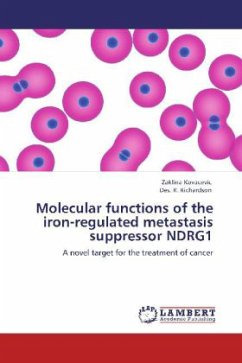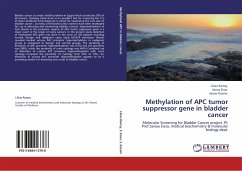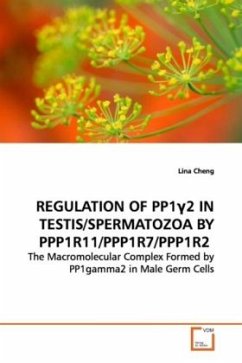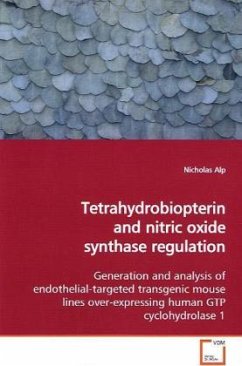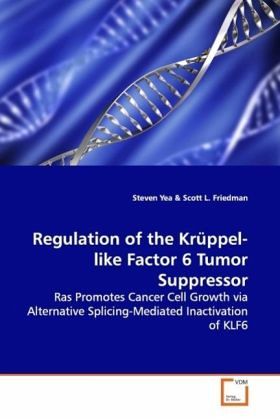
Regulation of the Krüppel-like Factor 6 Tumor Suppressor
Ras Promotes Cancer Cell Growth via Alternative Splicing-Mediated Inactivation of KLF6
Versandkostenfrei!
Versandfertig in 6-10 Tagen
45,99 €
inkl. MwSt.

PAYBACK Punkte
23 °P sammeln!
KLF6 is a ubiquitously expressed Krüppel-liketranscription factor whose role in vitro and in vivorole has not been fully identified. Like othermembers of the Krüppel-like family, KLF6 contains aconserved C-terminal three zinc finger DNA-bindingdomain (C2H2 motifs) and a unique N-terminaltransactivation domain. KLF6 directly binds DNA at GCbox promoter elements. Transcriptional targets ofKLF6 include collagen 1, transforming growth factorbeta 1 (TGF 1), types I and II TGF receptors,urokinase type plasminogen activator (uPA), and thehuman immunodeficiency virus long terminal repeat(HIV-1 LTR)....
KLF6 is a ubiquitously expressed Krüppel-like
transcription factor whose role in vitro and in vivo
role has not been fully identified. Like other
members of the Krüppel-like family, KLF6 contains a
conserved C-terminal three zinc finger DNA-binding
domain (C2H2 motifs) and a unique N-terminal
transactivation domain. KLF6 directly binds DNA at GC
box promoter elements. Transcriptional targets of
KLF6 include collagen 1, transforming growth factor
beta 1 (TGF 1), types I and II TGF receptors,
urokinase type plasminogen activator (uPA), and the
human immunodeficiency virus long terminal repeat
(HIV-1 LTR). Here, we identify a novel mechanism of
carcinogenesis, whereby oncogenic Ras signaling
enhances alternative splicing-mediated inactivation
of the KLF6 tumor suppressor in hepatocellular
carcinomas. These Ras-dependent splice forms are
shown to abrogate KLF6-mediated growth suppression,
and ectopic KLF6 splice variant expression can
restore a Ras-transformed phenotype.
transcription factor whose role in vitro and in vivo
role has not been fully identified. Like other
members of the Krüppel-like family, KLF6 contains a
conserved C-terminal three zinc finger DNA-binding
domain (C2H2 motifs) and a unique N-terminal
transactivation domain. KLF6 directly binds DNA at GC
box promoter elements. Transcriptional targets of
KLF6 include collagen 1, transforming growth factor
beta 1 (TGF 1), types I and II TGF receptors,
urokinase type plasminogen activator (uPA), and the
human immunodeficiency virus long terminal repeat
(HIV-1 LTR). Here, we identify a novel mechanism of
carcinogenesis, whereby oncogenic Ras signaling
enhances alternative splicing-mediated inactivation
of the KLF6 tumor suppressor in hepatocellular
carcinomas. These Ras-dependent splice forms are
shown to abrogate KLF6-mediated growth suppression,
and ectopic KLF6 splice variant expression can
restore a Ras-transformed phenotype.







